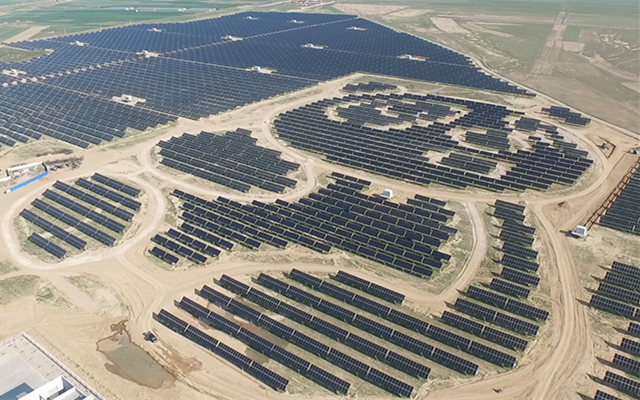Last week, China’s National Energy Administration announced the results of its first national solar auction for Feed-in Tariff (FiT)-approved projects, in which it awarded 22.78 gigawatts (GW) across 3,921 projects, all of which must be completed and grid-connected by the end of the year.

Image Credit: Panda Green Energy
As has already been covered extensively,China’s solar industry had a slow start to 2019, installing only 5.2 gigawatts due to a lack of certainty about the future of the government’s solar policy. However, with its Feed-in Tariff policy for 2019 finally announced in late-April, and 21 GW of grid-parity wind and solar projects announced in late May, the second half of 2019 is expected to outshine its sluggish start. In July, China’s National Renewable Energy Centre (CNREC) announced that a total of 7.61 GW of new solar capacity was installed between January and May 2019, a decrease of 44% year-over-year.
Unsurprisingly, this meant that Chinese renewable energy investment plummetted 39% over the first half of the year, dragging global renewable energy investment down 14%.
However, the second half of the year looks like it will see an explosion of solar PV activity, with China’s National Energy Administration announcing last week approval for 3,921 projects worth 22.78 GW to receive Feed-in Tariffs (FiT). According to the Asia Europe Clean Energy (Solar) Advisory (AECEA) group, a total of 4,338 projects worth 24.55 GW were submitted for approval, but 417 projects worth 1.77 GW were not approved.
More specifically, out of the approved 22.78 GW, 366 ground-mounted utility-scale projects worth 18.12 GW made up the lion’s share, accounting for 79.5% of the whole. 473 distributed projects worth 0.56 GW and 3,082 self-generation/self-consumption/excess capacity projects amounting 4.10 GW were also approved accounting for 2.5% and 18% respectively.
“In the context of submitted tariffs, the overwhelming share of ground-mounted utility-scale projects with an almost 80% share does not entirely surprise, given that rather larger projects allow to submit such competitive tariffs,” said Frank Haugwitz, Director of the AECEA, in an email to journalists. “Against this background, last year’s installed 44.26 GW witnessed an almost equal share of ground-mounted utility-scale and distributed PV with 23.30 GW and 20.96 GW respectively. Given the 2019 results, it therefore appears that the single most important evaluation criteria was the feed-in-tariff submitted by the developers. Hence, possibly during the 2020 bidding, other factors might be taken into account when evaluating submitted bids in an attempt to increase the share of distributed PV projects.”
The approved Feed-in Tariffs ranged in price from RMB 0.2795 (US$0.041), for a 100 MW project in the Ningxia Autonomous Region, to RMB 0.5500 (US$0.080), for a 24 kW project in the Chongqing Municipality. The average submitted FiT was RMB 0.3281 (US$0.048).
All awarded projects must be completed and grid-connected by December 31, 2019. Projects which fail to complete by this date will see their approved tariffs reduced by RMB 0.01 each quarter for the first two quarters of 2020, and if not connected by June 30, 2020, the approved FiT will be revoked and projects eventually cancelled altogether.
With all of this in mind, the AECEA has increased its full-year installation guidance for 2019 from between 32 to 34 GW, up to a relatively impressive 38 GW to 42 GW — though this will still represent a decline of between 5% to 14%, year-over-year.